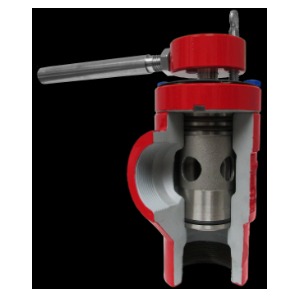A choke valve works by regulating the flow of fluid through a restriction in the valve, which can be adjusted to achieve the desired flow rate. The restriction is typically created by an orifice, which is a small opening through which the fluid must pass. In a fixed choke valve, the orifice is a fixed size and cannot be adjusted, while with an adjustable choke valve, the orifice can be adjusted to vary the restriction in the pipeline.
The flow rate through the valve is controlled by adjusting the position of the orifice or the restriction. When the orifice or restriction is fully open, the flow rate is at its maximum, while when it is fully closed, the flow rate is zero. To control the flow rate, the orifice or restriction is adjusted to a partial open position, which creates a pressure drop across the valve and reduces the flow rate. This can be done manually or automatically, through the use of actuators and control systems
What are the primary applications of choke valves in the oil and gas industry?
Choke valves are typically used in the oil and gas industry to control the flow of well fluids, such as oil or natural gas, from a wellhead to a production facility. The valve is designed to reduce the flow rate by creating a restriction in the pipeline, which can be adjusted to achieve the desired flow rate. This is typically achieved by using a tapered orifice or a variable orifice, which can be adjusted to increase or decrease the restriction in the pipeline.
How does a choke valve differ from other types of control valves?
The difference is purely on pressure rating (i.e Control valves are available upto 2500 class whereas choke valves are available upto 4500 class or API 10000 or 15000).
What are the main components of a choke valve and their functions?
A choke valve typically consists of several key components, including:
Body: The body is the main housing of the valve that holds all of the other components in place. It is typically made of metal, such as steel or stainless steel, and is designed to withstand the pressure and temperature of the fluid being controlled.
Orifice: The orifice is the restriction in the pipeline that controls the flow rate. It can be a fixed size or adjustable, depending on the type of valve. The orifice is typically located within the body of the valve.
Plug or needle: The plug or needle is the component that regulates the flow rate by moving into or out of the orifice. It can be cone-shaped or cylindrical, depending on the type of valve.
Actuator: The actuator is used to control the position of the plug or needle, and can be manual or powered. The actuator can be a lever, knob, electric motor, or hydraulic cylinder.
Seals: Seals are used to prevent fluid leakage around the plug or needle, and are typically made of materials such as Teflon, VITON, NBR, depending on the type of fluid and temperature.
Control system: The control system is used to automatically adjust the position of the plug or needle, and can include sensors, switches, and controllers.
Some choke valves may include additional components such as a stem, which connects the actuator to the plug or needle, and a bonnet, which covers the valve body and holds the stem in place.
What materials are typically used in the construction of choke valves to ensure durability and performance?
Durability: Choke valves are typically made of durable materials, such as steel or stainless steel, and are designed to withstand the pressure and temperature of the fluid being controlled. Versatility: Choke valves come in different types and sizes to meet the flow control requirements of various applications

